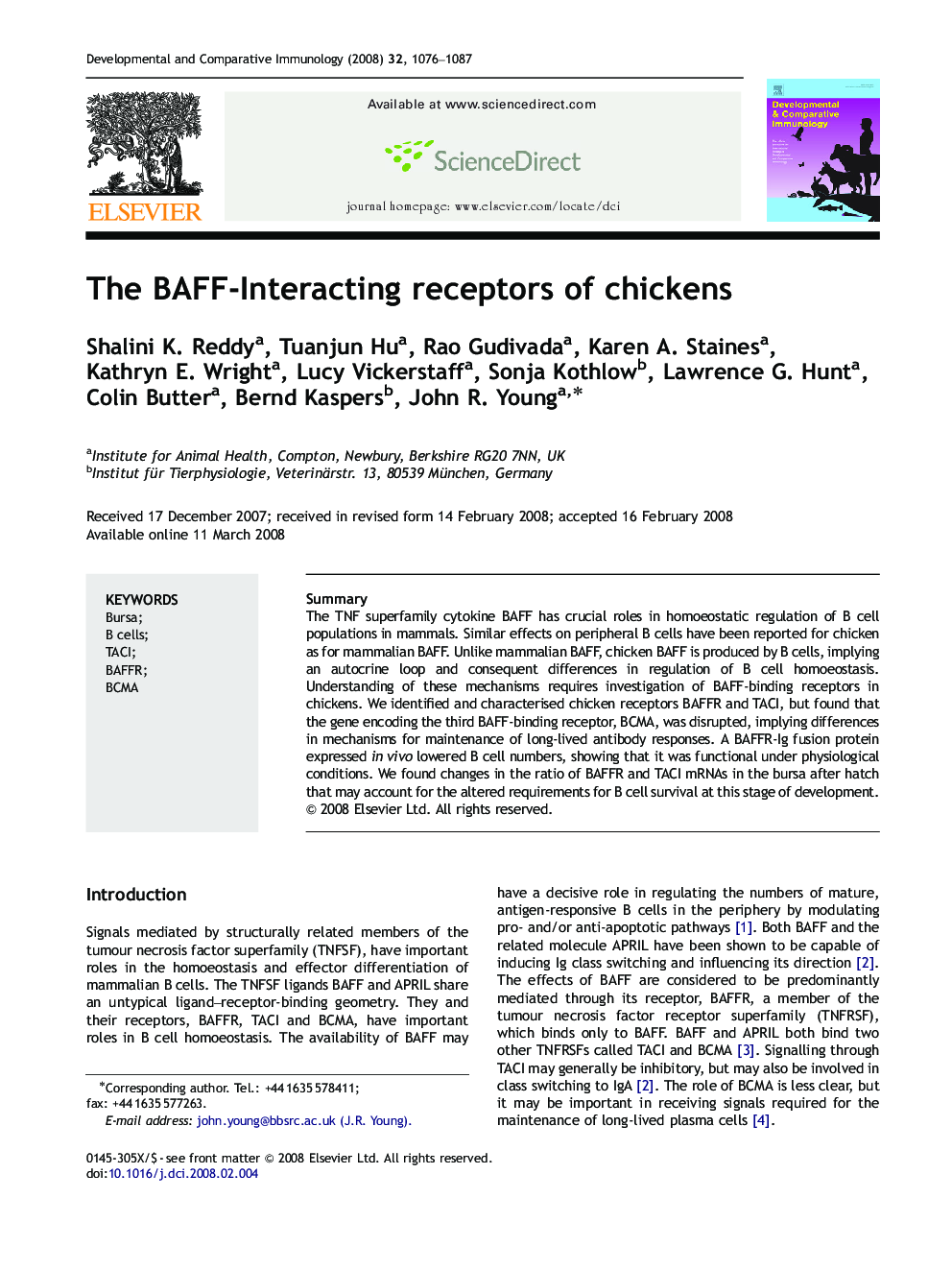| Article ID | Journal | Published Year | Pages | File Type |
|---|---|---|---|---|
| 2429793 | Developmental & Comparative Immunology | 2008 | 12 Pages |
SummaryThe TNF superfamily cytokine BAFF has crucial roles in homoeostatic regulation of B cell populations in mammals. Similar effects on peripheral B cells have been reported for chicken as for mammalian BAFF. Unlike mammalian BAFF, chicken BAFF is produced by B cells, implying an autocrine loop and consequent differences in regulation of B cell homoeostasis. Understanding of these mechanisms requires investigation of BAFF-binding receptors in chickens. We identified and characterised chicken receptors BAFFR and TACI, but found that the gene encoding the third BAFF-binding receptor, BCMA, was disrupted, implying differences in mechanisms for maintenance of long-lived antibody responses. A BAFFR-Ig fusion protein expressed in vivo lowered B cell numbers, showing that it was functional under physiological conditions. We found changes in the ratio of BAFFR and TACI mRNAs in the bursa after hatch that may account for the altered requirements for B cell survival at this stage of development.
